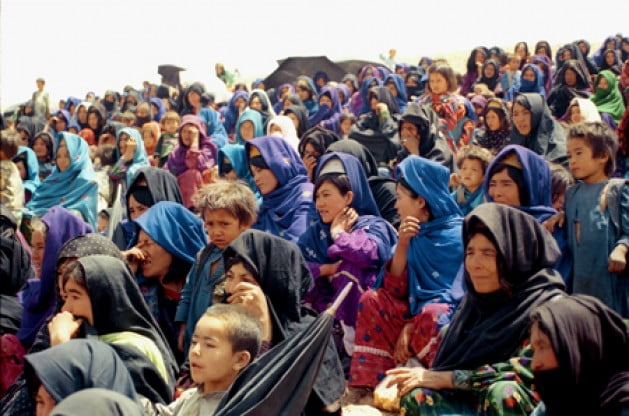On February 24, masked armed men in southern Afghanistan abducted 30 members of the Hazara community, an ethnic minority in Afghanistan. They have not been seen nor heard from since. The abducted people were traveling by bus from Iran when they were seized in Zabul province, on the road to Kabul.
This is sadly not an unusual occurrence. But it is the latest manifestation of an ongoing and largely overlooked aspect of the crisis in Afghanistan: unrelenting human rights abuses committed against the Hazara community, who are Shi’ites and comprise about 25% of the population of Afghanistan.
Not long before this kidnapping a similar incident occurred when the Taliban stopped two vans—traveling from Ghor (western Afghanistan) to the capital, Kabul—and after checking peoples’ identifications cards, the Taliban separated 14 Hazaras from 32 others and shot them dead. The incident provoked anger and demonstrations in different parts of the country.
Hazaras have long experienced prejudice and been the victims of sectarian massacres throughout the history of Afghanistan; and suffered mightily at the hands of the Taliban. Hazaras are Shiite Muslims opposed to the extremist Taliban militia when they ruled the country. When the Taliban seized Mazari-e-Sharif in northern Afghanistan in 1998 they carried out systematic search for Hazaras in the city and massacred thousands of them.
Suffering the consequences of the war, thousands of Hazaras sought refuge in Iran and Pakistan. As a result of that, there is still a large number of Hazaras living in the predominantly Sunni country, Pakistan, in which the persecution of them continues to this date. Currently, there are about 1 million Hazaras living in Pakistan and more than a million in Iran.
Afghanistan has a population of about 30 million and consists of several main ethnic groups including: Pashtun—the biggest, Tajik, Hazara—the third largest, Uzbek, Turkmen, Aimaq, Baluch, Nuristani, and Kizilb. Hazaras are mainly located in central Afghanistan and make up about a quarter of the population. However, after the fall of the Taliban thousands of Hazaras returned to Afghanistan and chose to dwell in larger cities such as Kabul, Hirat and Mazar-e-Sharif to have access to job opportunities, better living conditions and better education. Despite millions of dollars spent on development projects in Afghanistan, due to lack of government attention, Hazarajat—one of the safest areas in Afghanistan—suffers access to basic urban infrastructure and development to this date.
Six weeks after this abduction, there is no news from the kidnapped people and the government has not taken any effective step to address the issue. The ongoing persecution of ethnic minorities in Afghanistan at the hands of the Taliban militants has continued, despite whatever defeats they have suffered on the battlefield.
If Afghanistan is going to survive and thrive in the new era under President Ashraf Ghani, Afghans are going to need to embrace their national identity as a multi-ethnic society. They need to stand up against sectarian and ethnic division. This is not only for the good of ethnic minorities like Hazaras, but for the whole of society.
